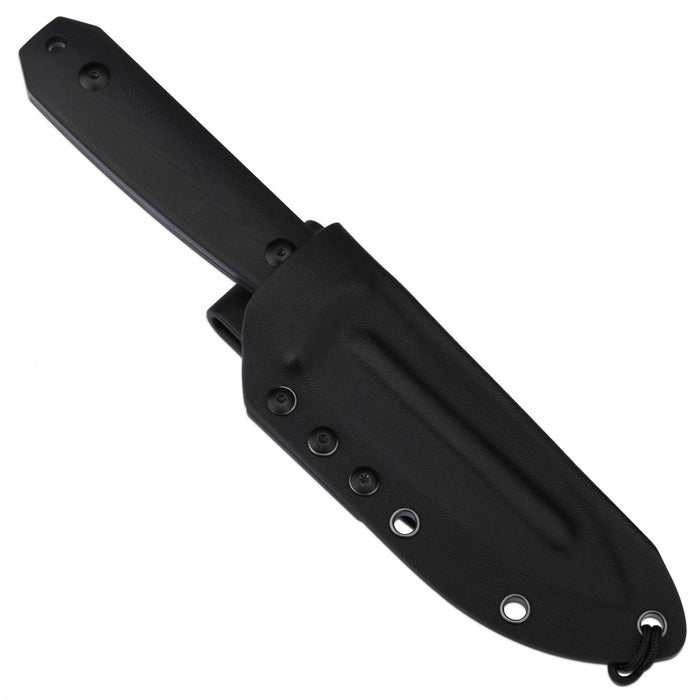When it comes to choosing a knife for tactical situations, the debate between fixed blade knives and folding knives has been ongoing for years. Both types of knives have their own advantages and disadvantages, making it essential to understand their characteristics and consider the specific needs of the situation at hand. In this article, we will delve into the key differences between fixed blade knives and folding knives, and explore which one is best suited for tactical situations.
Fixed Blade Knife: Strength and Reliability
A fixed blade knife is a solid, one-piece construction with a blade that does not fold. This design provides exceptional strength and reliability, making it the preferred choice for many tactical situations. The absence of moving parts ensures that a fixed blade knife can withstand heavy-duty tasks without the risk of failure. Whether it's cutting through tough materials, prying open doors, or self-defense, a fixed blade knife offers the necessary durability and stability.
One of the advantages of a fixed blade knife in tactical situations is its quick deployment. With no folding mechanism to deal with, a fixed blade knife can be drawn and ready for use in an instant. This can be crucial in high-pressure scenarios where every second counts.
Folding Knife: Versatility and Portability
On the other hand, folding knives offer a different set of advantages that make them suitable for tactical situations. The ability to fold the blade into the handle makes them highly portable and easy to carry. This compactness allows for discreet concealment, which can be advantageous in certain tactical operations where maintaining a low profile is essential.
Furthermore, folding knives often come with additional features such as pocket clips, assisted opening mechanisms, and multiple blades. These features enhance the versatility of folding knives, allowing users to adapt to various tasks and situations. For example, a folding knife with a serrated blade can be useful for cutting through ropes or seatbelts, while a plain edge blade is ideal for precision cutting.
Choosing the Right Knife for Tactical Situations
When it comes to selecting the best knife for tactical situations, it ultimately depends on the specific requirements of the mission or task at hand. Here are a few factors to consider:
1. Mission Objective
The nature of the mission or objective plays a crucial role in determining the type of knife to use. If the situation requires heavy-duty tasks such as breaching doors or cutting through tough materials, a fixed blade knife is the better choice. However, if the mission involves a need for discreet carry or versatility in different scenarios, a folding knife may be more suitable.
2. Environment and Conditions
The environment and conditions in which the knife will be used should also be taken into account. If the operation takes place in a harsh outdoor environment where the knife may be exposed to extreme temperatures, moisture, or dirt, a fixed blade knife's solid construction and easy maintenance make it a reliable option.
3. Training and Skill Level
The user's training and skill level with the chosen knife are crucial for effective and safe use. While both fixed blade knives and folding knives require training, the simplicity of a fixed blade knife's design makes it easier to learn and master. On the other hand, folding knives with complex mechanisms may require more practice to deploy and operate efficiently under stress.
4. Legal Considerations
It is essential to be aware of the legal restrictions and regulations regarding knife carry and use in your jurisdiction. Different regions may have specific laws governing blade length, locking mechanisms, and concealed carry. Ensure that the chosen knife complies with the local laws and regulations to avoid legal complications.
Ultimately, the choice between a fixed blade knife and a folding knife for tactical situations depends on a careful evaluation of the specific needs and circumstances. It is important to consider the strengths and weaknesses of each type and select the knife that best aligns with the mission objectives, environment, training, and legal requirements.
For more information on fixed blade knives and folding knives, you can visit the following credible sites:
Note: The links provided above are for reference purposes only and do not constitute an endorsement of any specific brand or product. Please ensure to conduct your own research and make informed decisions.

